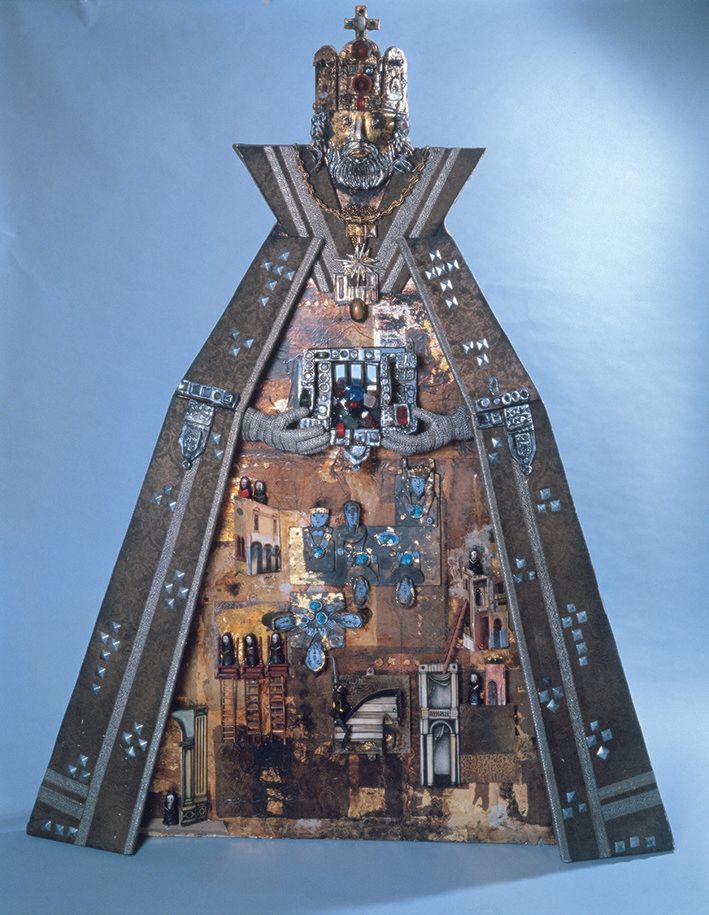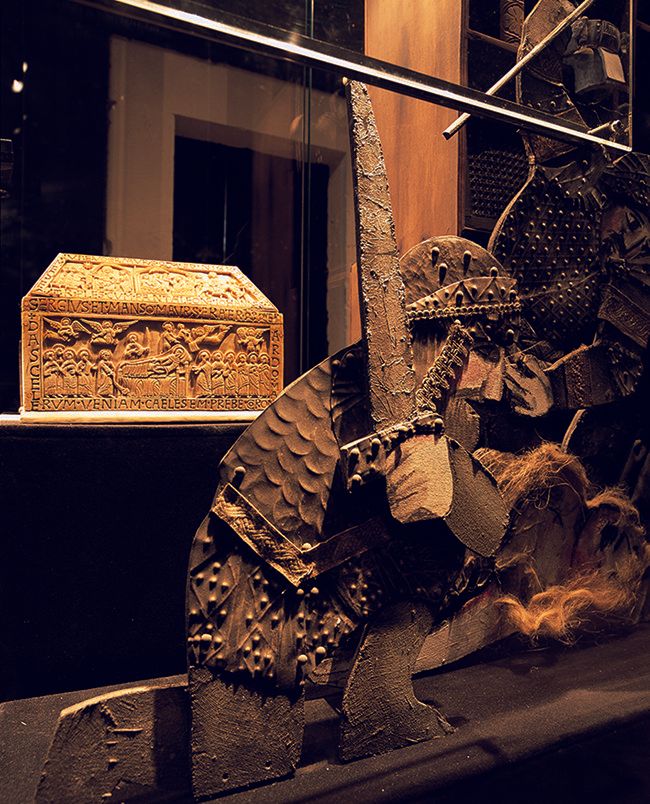MUSEUM OF THE ABBEY OF FARFA. Layout and museographic project of the historical-archaeological museum of the Abbey of Farfa. With Ennio De Concini, Guido Fiorato, Emanuele Luzzati, Walter Maestosi, Marcello Morgante.
A museum between architecture
and theatre: historical and archaeological exhibits become part of a visual and audio narration
The project for the Archaeological Museum of the Abbey of Farfa, one of the most important monumental complexes in central Italy - from a historical and artistic point of view - was an example of an encounter between the worlds of architecture and theatre.
The museum was to occupy a wing of the restored monastery, displaying a limited number of extraordinary early medieval pieces (5th-12th centuries): a few ceramic, glass and metal fragments, a few large stone elements and a very precious 12th-13th century Amalfi ivory casket.
The first choice of the design team was to occupy the space of the convent's wing centrally. To this end, a single transparent volume was created, 24 metres long and 70 centimetres deep, whose height was determined in harmony with the ancient architecture, stopping at the impost of the cross vaults.
The volume also containted all the technological systems of the exhibition, which ran along the base plinth in a special compartment without disturbing the architecture of the monumental complex: once the museum was set up, it was possible proceed with the precise lighting of the exhibits and of the scenography, with a precise calibration for each individual element.
The room in the monastery's wing was darkened and the walls were covered with black fabric, in order to give greater prominence to the central showcase. The decision was made to contextualise the pieces in an imaginative background recounting the history of the Abbey, based on the Chronicon Farfense
written by the monk Gregory of Catino at the end of the 11th century. The long glass volume thus turned into a large unfolded book, a story unfolding, like a stage set, as the visitors moved by.
13 artistic workshops from the North to the South of Italy, one scriptwriter, two set designers, one actor to translate and perform the ancient text of the Chronicon Farfense
The need to translate and represent the ancient text motivated the designers to call upon figures from the world of theatre to create the set of the exhibition: Emanuele Luzzati (together with his collaborator Guido Fiorato), renowned set designer and illustrator, "Grand Official of the Italian Republic" in 2001 for his artistic merits, Ennio De Concini, scriptwriter and writer, Academy Award winner in 1963; 13 artistic workshops located from the North to the South of Italy, specialised in the different materials and techniques that would give three-dimensional body to the historical representation: wood, fabrics, papier-mâché, ceramics, glass, etc.
The medieval text by Gregorio da Catino was adapted into twelve scenes by the scientific curators, and then translated into a poetic text by Ennio De Concini. This text, recited by the great actor Walter Maestosi (famous for his engraving of Dante's Divine Comedy), accompanied the visitor through the museum: twelve directional microphones were activated progressively, composing a fabric of sounds, similar to a chorus of whispered
voices.














